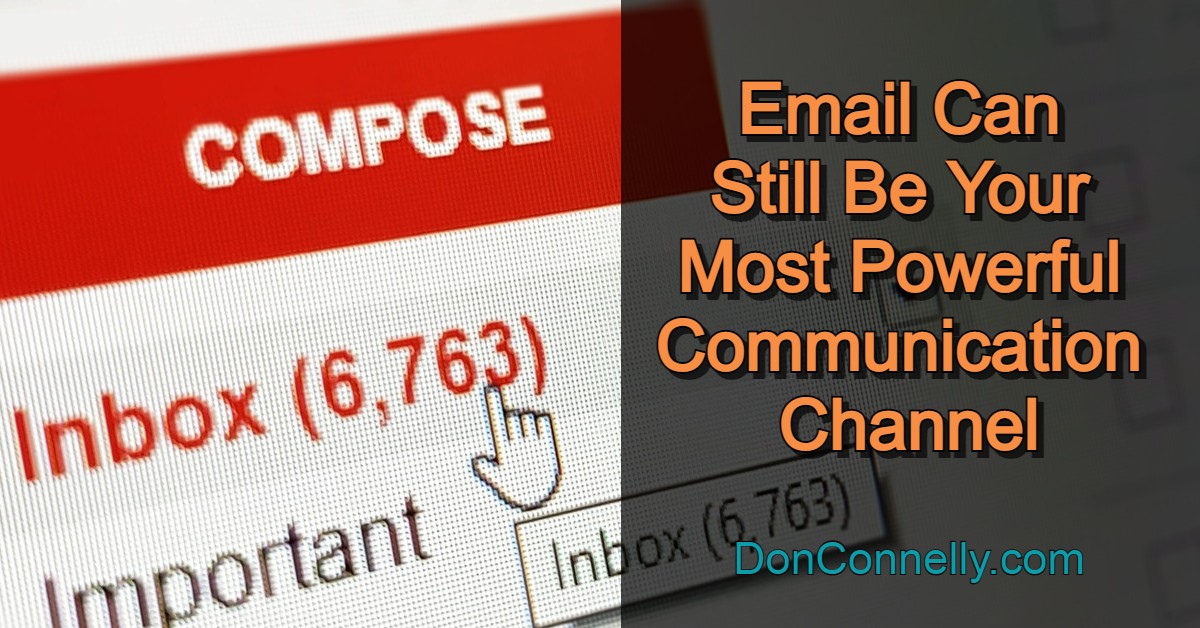Digital Marketing for Financial Advisors – Email Can Still Be Your Most Powerful Communication Channel
 It wasn’t long ago when you were considered a marketing dinosaur if you didn’t use email campaigns. Today, you are obsolete if you aren’t using digital marketing to take advantage of all the digital channels available to you, including email marketing. A digital marketing strategy aims to push targeted content out to pull qualified leads in, and email marketing is core to that strategy.
It wasn’t long ago when you were considered a marketing dinosaur if you didn’t use email campaigns. Today, you are obsolete if you aren’t using digital marketing to take advantage of all the digital channels available to you, including email marketing. A digital marketing strategy aims to push targeted content out to pull qualified leads in, and email marketing is core to that strategy.
The challenge is your target market is receiving so much content through the internet, email, social media, and snail-mail that the noise has become deafening. It used to be that marketers would create the message and push it out to anyone within range of their ads or mailers. In the digital age, consumers control the message, with the ability to determine what information they receive, how they receive it, and how they respond, if they want to respond. If any content manages to reach them outside that control, it is probably deemed irrelevant or a nuisance.
Email marketing in the digital age
The days of blindly blasting out emails, hoping that 10 percent of your list opens them, are over. It’s ineffective, it annoys people, and you risk earning spam status if you continue to do it. However, advisors who understand the power of permission-based email marketing in an inbound marketing strategy can reap significant and sustainable returns.
The goal of an inbound marketing strategy is to fill your pipeline with high-quality, targeted leads and prospects who opt into receiving your emails because they find the content to be of value. From there, their activities are tracked so future email content can be tailored to their distinct needs and preferences. Instead of sending one-size-fits-all content, which is not likely to be read, you’ll be sending them content that will appear to your prospects that it was intended for them.
How does inbound marketing work?
By adding a content or marketing automation program to your email marketing, you can begin to drill down on your email list to segment it more finely. For instance, you can segment your list demographically, socio-economically, by industry, profession, investment objective, planning needs, their stage in your pipeline, and how much they engage with you. By doing so, you can tailor your email content for specific segments, increasing its relevance and its likelihood of being opened and read.
When prospects respond to a call-to-action in an email, such as clicking on a link to your website to download a report, the program can track their activities across your digital channels. You’ll know when they visit your website, what content they are viewing, and how long they stay. Along the way, your marketing automation program has prepared responses that are automatically emailed to keep the conversation going.
These programs allow you to create automated flows of “next steps” that track your leads through the pipeline from the time the email is opened. An autoresponder sends responses based on your leads’ activities, including welcome emails, thank-you emails, follow up to a download request, invitations to webinars, appointment confirmations, meeting or call follow-ups, etc.
The process of cultivating the relationship is then based on what interests the prospect, which enables you to provide more value in your content. The program teaches you how to tailor your content based on the prospect’s responses. Because every activity is tracked – from emails sent and opened to lead responses, to lead conversions – the data generates a ROI number that helps you make better decisions about allocating your marketing resources.
Focus on results
Whereas traditional email marketing is about merely getting content out, content or marketing automation is about results. Are you increasing the open rate of your emails? Is the level of engagement with your leads and prospects increasing? What content are they downloading? Are you better able to predict who will become a client? The data collected enables you to refine it to pinpoint your leads’ interests further to improve results. Ultimately, your goal is to fill your pipeline with highly qualified and engaged leads and prospects who are more likely to become clients.
In a highly competitive arena, differentiation is crucial. Financial advisors have no choice but to be proactive in standing out and engaging with their target market. In a market that is saturated with information, content, and the way it is delivered is not only a key differentiator, but it’s also essential to starting and cultivating relationships. Financial advisors who use content management programs are not only able to offer more personalized and relevant content, they are also able to be more proactive in their outreach.
If you’re having trouble building trust with prospective and current clients online, watch this 2-minute video and learn how your firm can benefit from a conference call/webinar presentation with Don Connelly on the topic.
If you think this presentation would be of value to your firm, please call 941.346.1166 or fill in the form below to send us an email so we can discuss the details and schedule a date for a presentation.



